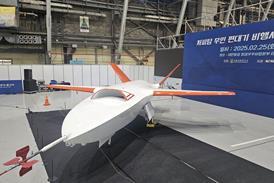US CARGO CARRIERS are bracing for a Federal Aviation Administration airworthiness directive (AD) which could severely restrict the payload of Boeing 727 freighter conversions. The AD had been anticipated in late December 1996, but the FAA says that it now plans to begin discussions with aircraft modifiers and operators in late January.
The AD would affect the majority of more than around 200 727s which have been converted from passenger to freighter aircraft by third-party modification companies, rather than by the original manufacturer, and is the result of recent FAA inspections which "-have revealed possible discrepancies in the designs and installation practices used in some of these conversions", says the agency. ADs affecting other third-party conversions are expected to follow.
"It's a matter of when, not if [the AD is issued]," says an industry source, who adds that the modifications required are expected to be "expensive". While the directive could reduce the payload of converted 727 freighters from around 30,000kg to as little as 9,000kg, making them uneconomic to operate, the FAA is not expected to issue an emergency AD requiring immediate compliance. Instead, it is likely to give operators time, possibly six months or to the next scheduled C-check, to incorporate the modifications.
To remove the payload restrictions, holders of the supplemental type-certificate for each 727 conversion will have to recalculate the loads used during design and gain FAA approval for structural modifications to be incorporated by operators. The review was prompted by structural problems experienced with GATX Airlog's third- party 747 cargo conversion, although there have been no known incidents involving 727 freighters. GATX-modified 747-100 freighters effectively have been grounded by FAA payload restrictions.
Behind the directive is the issue of substantiation of the loads assumed during design of the conversion. Third-party modifiers did not have access to Boeing's original data and the FAA believes that the loads used during design may have been wrong and that converted aircraft, therefore, may not meet 9G crash-survival requirements. Areas affected are seat tracks, floor beams, shear panels (which transfer cargo loads to the fuselage barrel) and the cargo-retaining system, whether it is a bulkhead or a net.
Source: Flight International























